Last time we delved into the world of strong side carry, exploring the ins and outs of IWB and OWB on your dominant hip.
(Missed that article? Check it out here.)
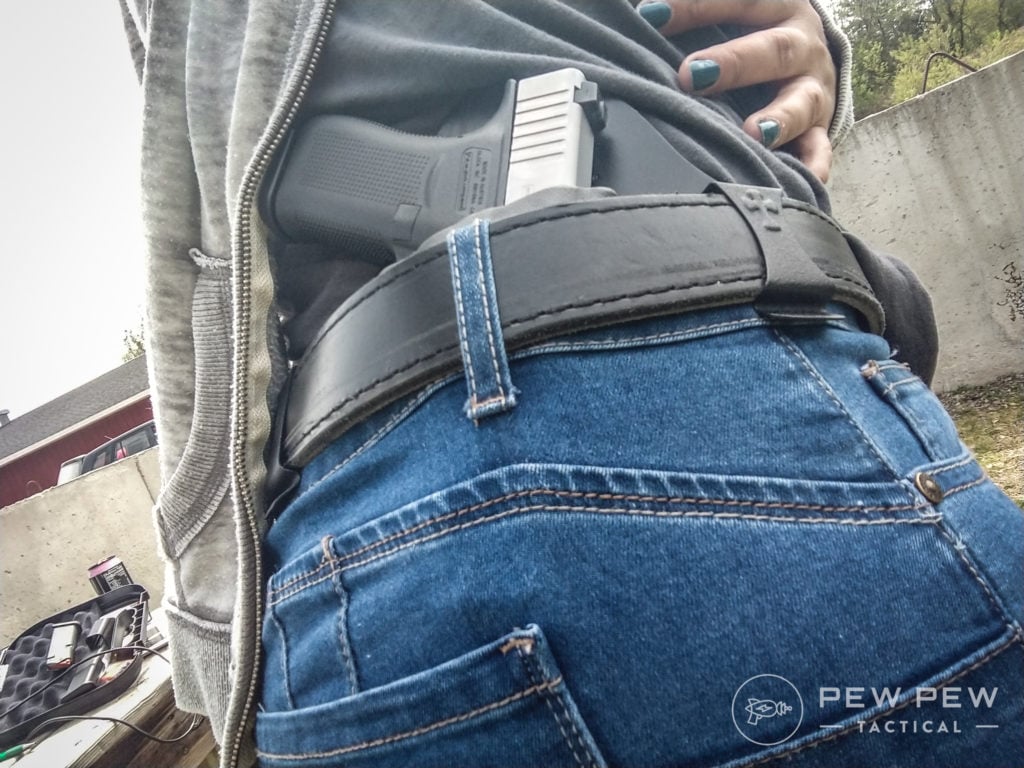
Today, we’re continuing on our concealed carry journey, looking at a method of carry that has become quite trendy over the past few years.
I’m talking about appendix carry.
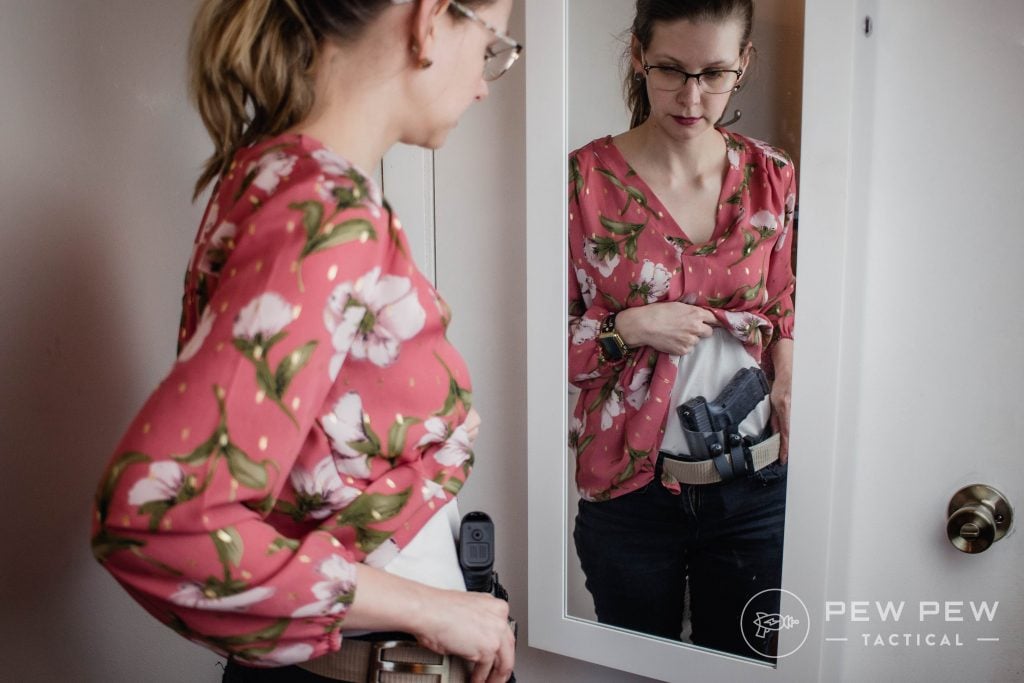
We’re going to spend some time getting to know AIWB, talk about why it’s receiving a surge in interest, and also dispel some myths. Of course, we’ll end on some tips you can incorporate if you’re looking to jump into the AIWB realm.
With that said, Brownells’ Daily Defense dives into more tips for AIWB, so be sure to check out the video below.
Table of Contents
Loading…
What is Appendix Carry?
Appendix carry, also known as AIWB, is another way to carry a concealed gun. But, this method differs from the strong side in two significant ways.
First, AIWB places the gun at the front of the body over or near the appendix. (Suddenly, the naming scheme all makes sense…)

Secondly, AIWB exclusively caters to inside-the-waistband holsters. You’re not going to find any outside the waistband models here. The front-and-center placement makes OWB pretty difficult.
If you spent any time in the gun world, you’ve probably heard about AIWB — some of it good and probably some bad as well.
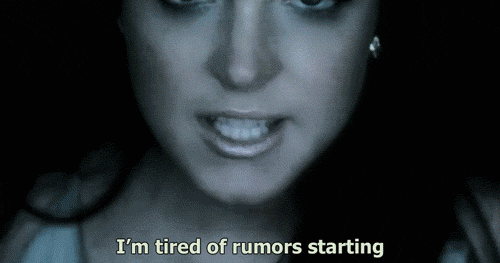
In case you’ve escaped the AIWB talk, let’s walk through some pros, cons, and even myths surrounding this style.
Pros of Appendix Carry
What are the advantages you gain by carrying with this method?
Like strong side carry, this method gives you direct access to the gun. With your pistol placed at the front of your body, there’s really only your cover garment (a.k.a. shirt or sweatshirt) to contend with when drawing.
In turn, this means an overall faster draw stroke.
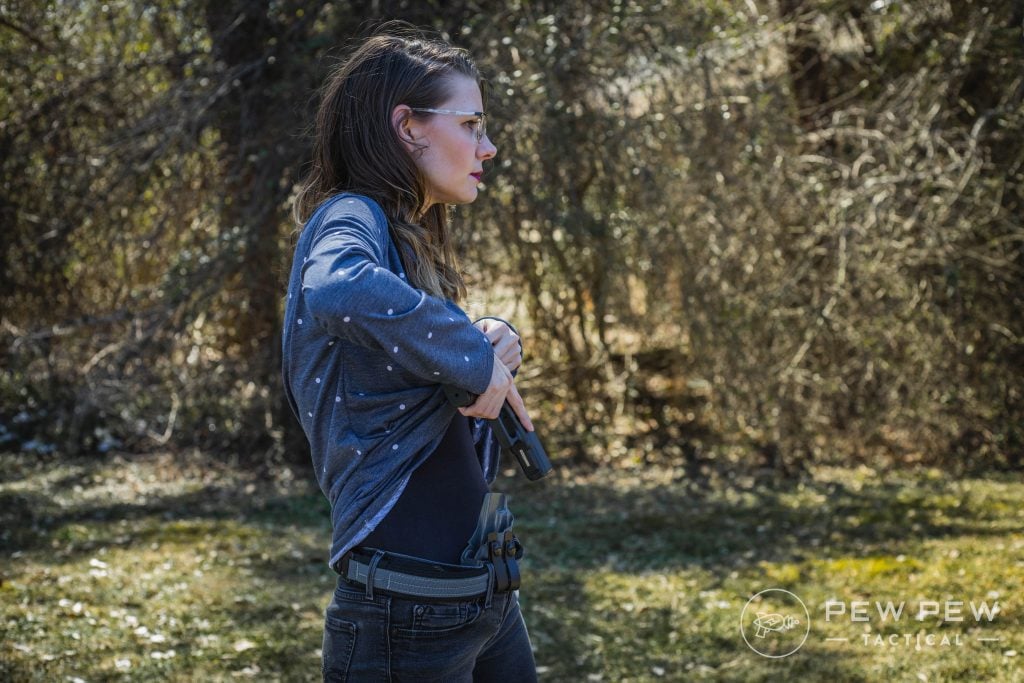
Now, there are a lot of rumors that AIWB is way faster than traditional IWB or strong side carry.
Is this true?
Well, honestly, that depends. The person carrying the gun is the driving factor in the speed at which the draw occurs.
Training and practice will get you much further in terms of draw times than placement on the body — at least where strong side and appendix carry are concerned.
The more you practice on the range and at home, the faster your draw will be.
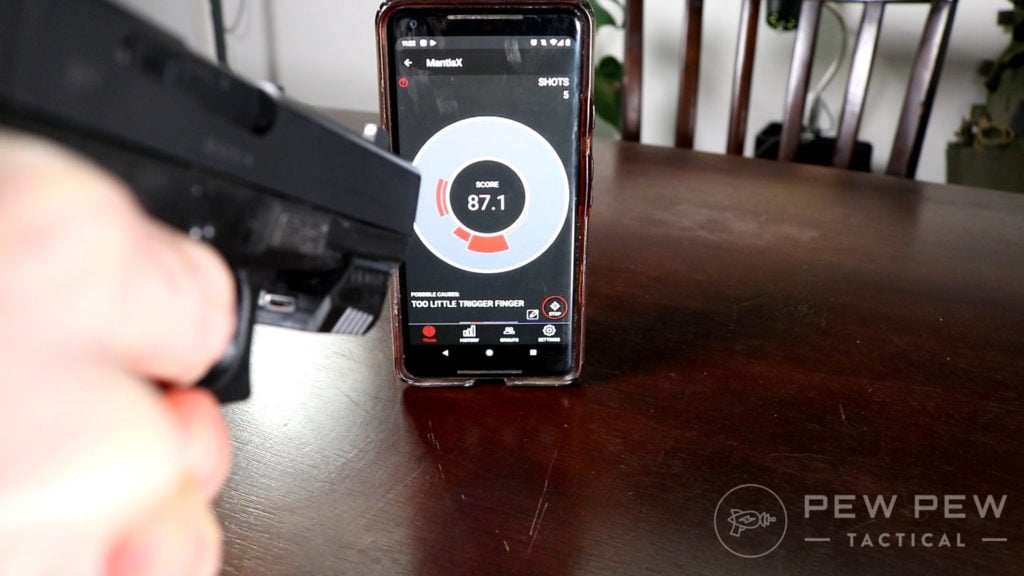
Do people put up blistering times from AIWB? Absolutely. But I can guarantee it’s because they practice.
Another big advantage to AIWB?
You can carry bigger guns!
Because of the placement, you’re not limited to teeny-tiny firearms. For instance, I am just over 5-feet tall and weigh right around 100-pounds, and I carry a Glock 19-sized pistol AIWB, no problem.
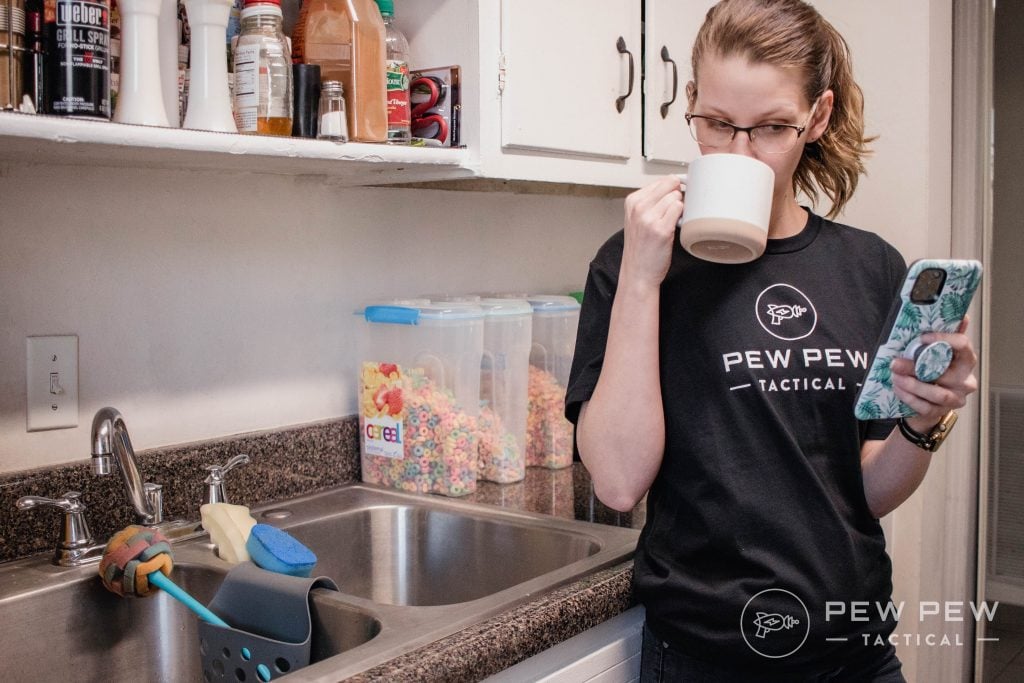
Before moving to AIWB, when I carried strong side IWB, I could only manage a subcompact to my petite frame. Moving the gun forward on my body opened a lot more options for carry guns.
And this is why I personally carry AIWB. I dig options, and I get more with AIWB.
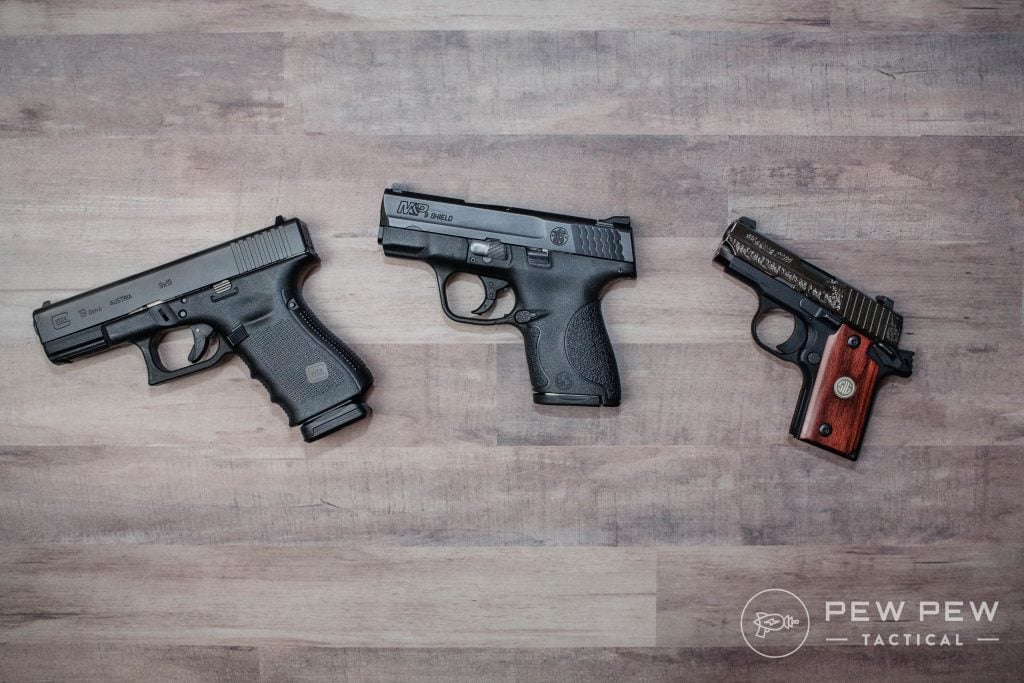
Cons of Appendix Carry
Every carry style has downsides, and AIWB is no stranger to flaws.
While, yes, you get more options with guns in AIWB, those options narrow when it comes to holsters. AIWB is exclusively inside the waistband, so you’ll need to ditch that OWB holster…and that strong side IWB too.
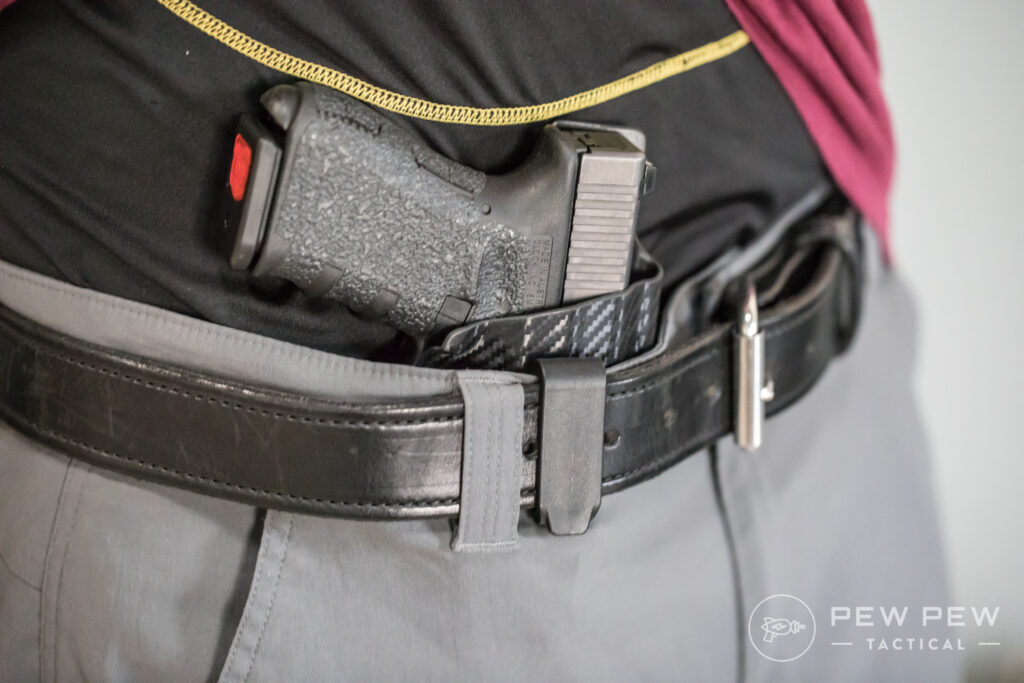
To safely carry AIWB, you need a dedicated AIWB holster, meaning one designed explicitly for appendix carry. You can’t just repurpose your standard strong side IWB rig.
Many strong side IWB holsters are constructed to make grip angles easier when drawing from the side or just behind the hip.
AIWB requires a different grip angle, so it’s best practice to go ahead and get a holster constructed with that in mind.
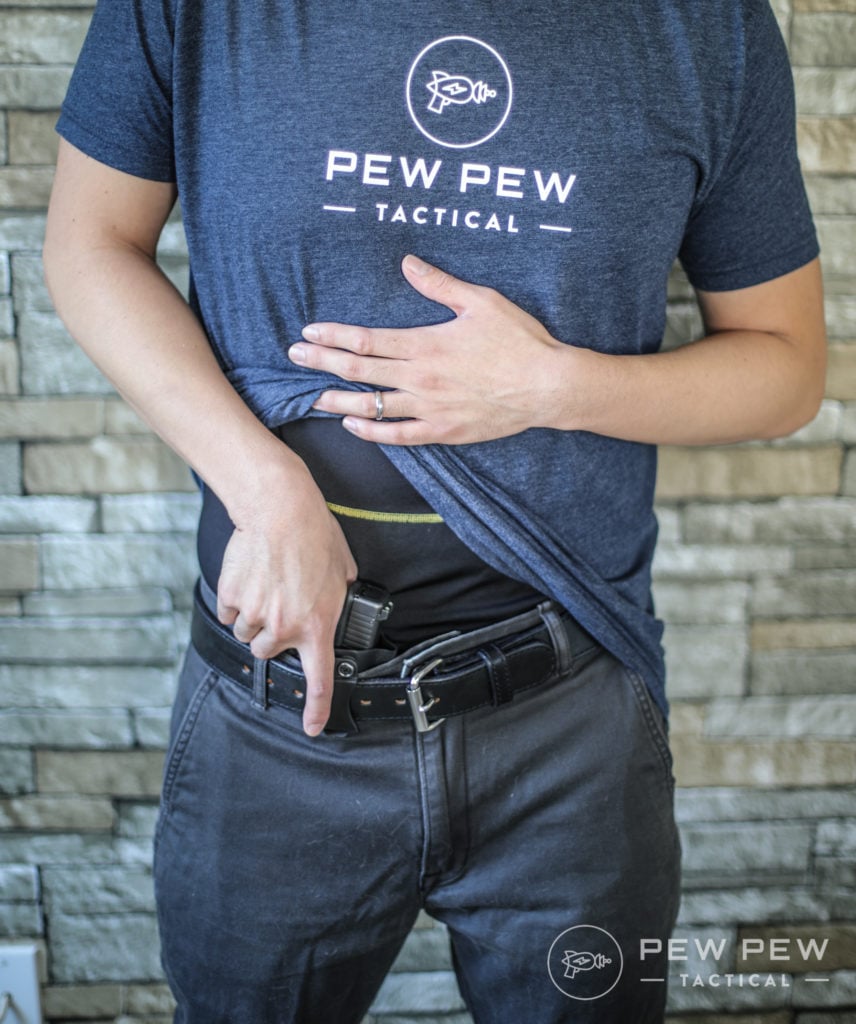
Good AIWB holsters also tend to run a little higher in terms of price. You can expect to spend $75+ on a good, quality holster like one from Keeper’s Concealment or PHLster — all designed for safe and concealable AIWB carry.
Another con to this style of carry is comfort.
Sometimes, people don’t vibe with AIWB because it’s just not comfortable with their body type. Depending on your gun and holster, it might feel slightly odd when sitting (especially starting out).
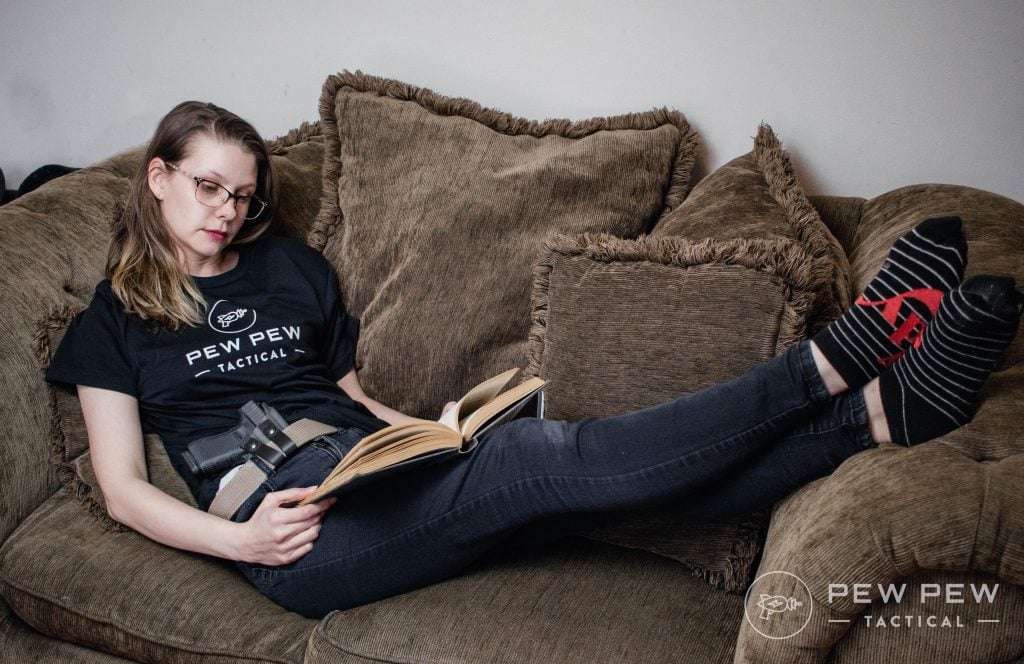
In my experience, it really comes down to the overall setup. A well-made holster paired with the right-sized gun and a good belt makes a world of difference and will easily make or break your comfort level.
I’ve said it before, and I will say it again…it’s worth it to invest in good gear to maximize comfort and concealment.
Will You Shoot Your Junk Off with AIWB?
I would be remiss if I didn’t take a beat to talk about the most common myth associated with appendix carry.
Of course, I’m talking about… “you’ll shoot your junk off.”
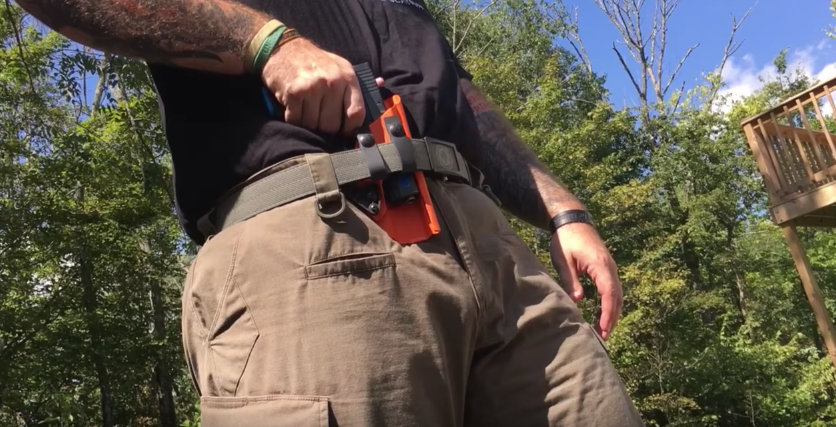
This myth centers on the idea that the location of the gun is dangerous. If user error causes the gun to unintentionally fire — also known as a negligent discharge — the round will impact the groin and/or femoral artery.
Is it possible to have an ND while carrying AIWB that strikes your body?
Yes.
Is it possible to have an ND in nearly any other carry position that strikes your body?
Also yes.
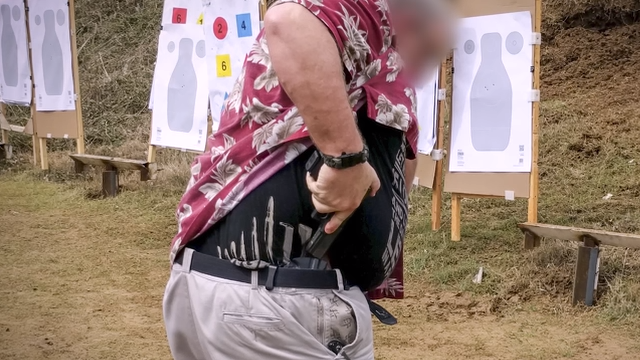
Again, this is why training, practice, and following the firearm safety rules matter…no matter what carry mode you adopt.
In fact, check out this fantastic video from John Johnston at Ballistic Radio demonstrating the anatomy of an AIWB ND and how difficult it is for the round to actually impact the body — especially when the proper reholstering procedure is followed.
That said, many AIWB carriers prefer a DA/SA pistol or a handgun with a manual safety as an added layer of security.
Tips to Concealed Carry AIWB
1. Dressing for AIWB
What clothing works best with AIWB? For most AIWB fans, the answer is a lot.
This style is quite versatile, and I find it works best with most of my wardrobe — more so than strong side IWB.
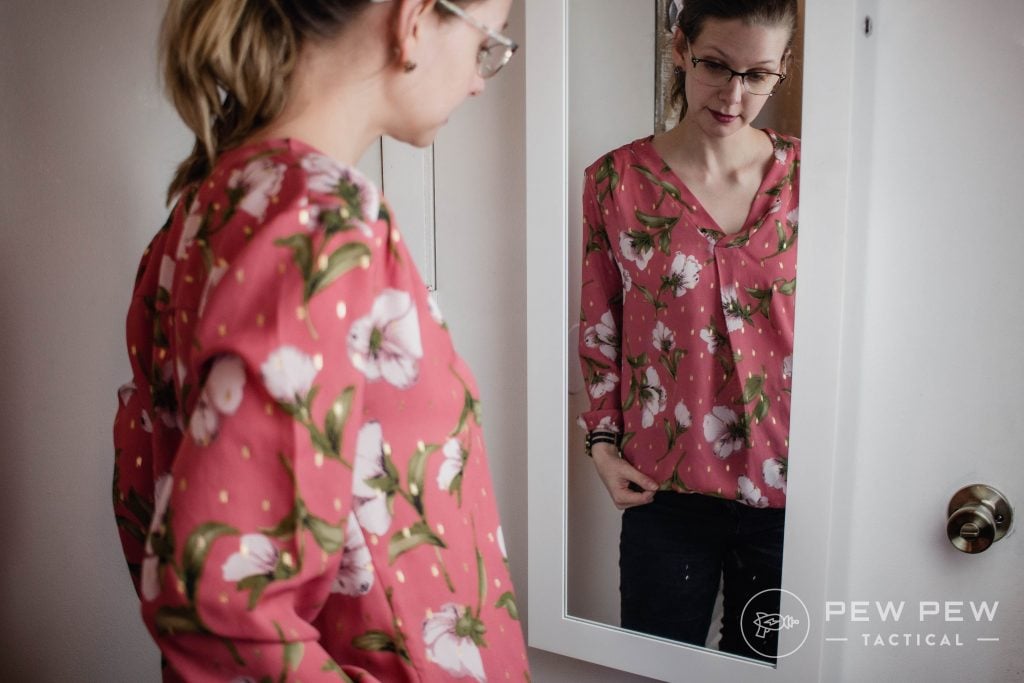
That said, there are some things to keep in mind.
Longer shirts work best with AIWB because you need that added length to cover the gun on the beltline.
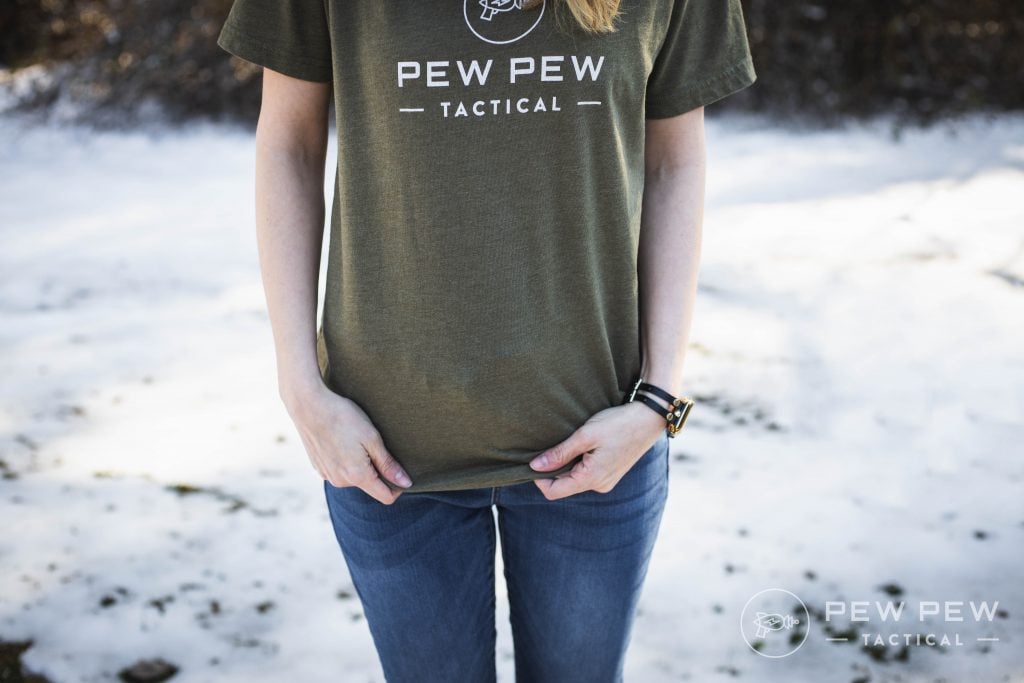
I suggest putting your favorite t-shirts and blouses through the wringer by twisting, turning, and raising your arms to see if the gun/holster can be seen.
Crop tops, on the other hand…well, maybe stay away from those.

Patterns are your friend! They break up the outline of the gun.
Ladies, break out the florals and polka dots!
Dudes, plaid and Hawaiian are about all you got. Either way, use patterns to your advantage.
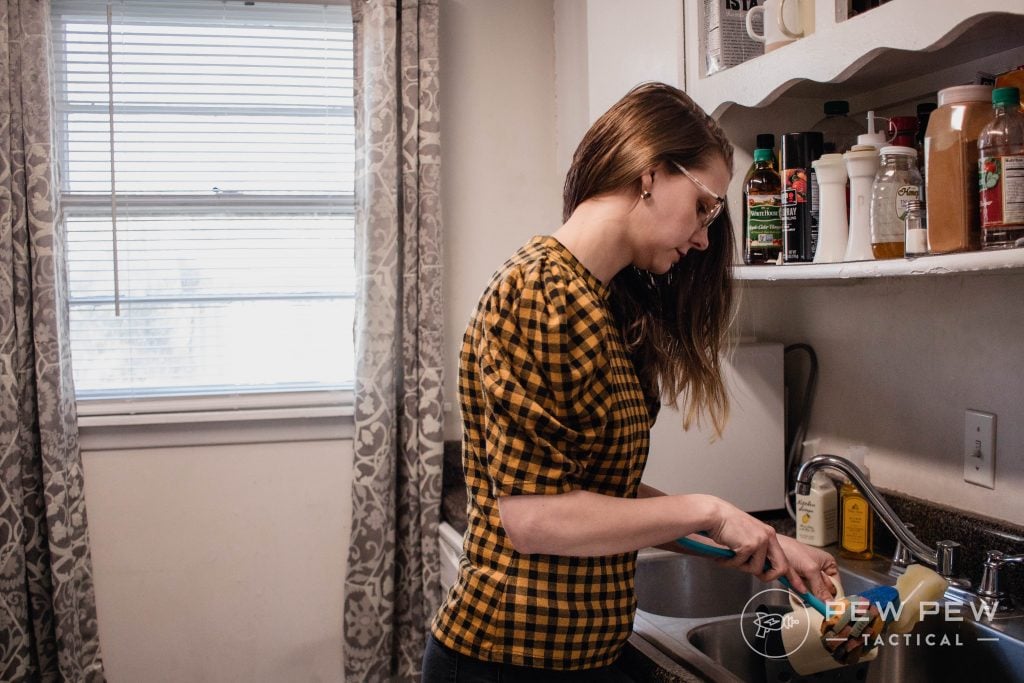
And while we’re on the topic of female carry, jewelry can also help draw the eye up and away from an AIWB gun.
A chunky, bright necklace or funky earrings will cause people to focus their gaze upwards.
2. AIWB Holsters
To successfully carry AIWB, you should invest in a dedicated holster designed for AIWB. As I said earlier, don’t reuse a standard strong-side IWB holster.
It’s not going to create the concealment you want, and it will likely feel uncomfortable.
An AIWB holster features a neutral cant, meaning it rides vertically. This allows for the best grip on the gun.
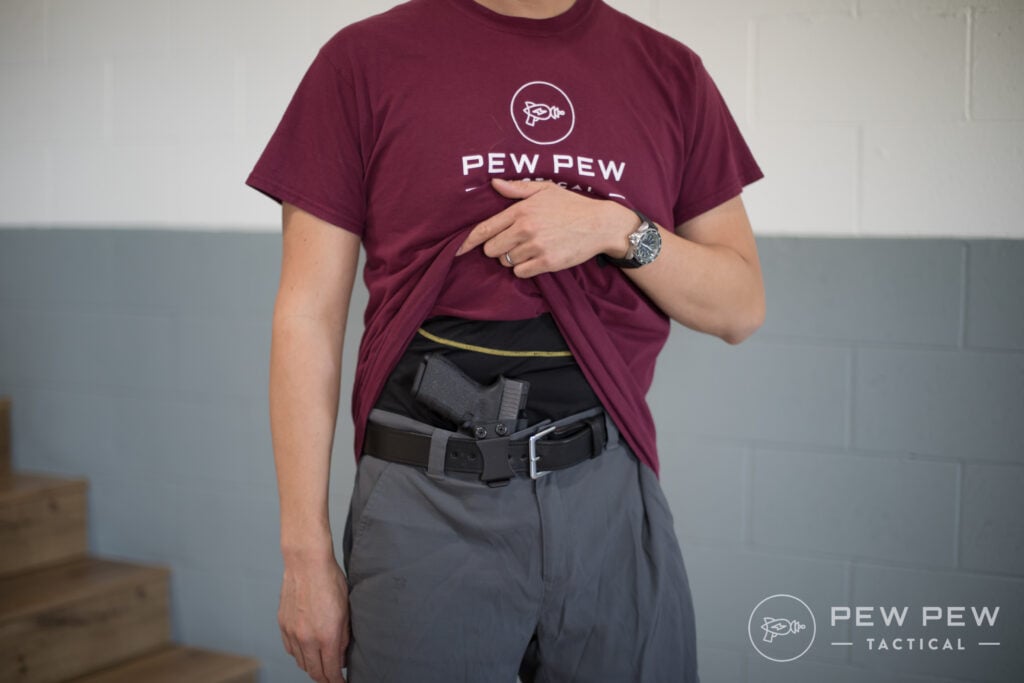
If you’re petite or maybe not getting the concealment you want from AIWB, consider adding a claw or wedge to the holster.
A wedge or claw rotates the gun’s muzzle forward and away from the body while also bringing the grip back into the body. This grants much better concealment — especially for larger guns.
Some holsters have a velcro wedge option, but in a pinch, you can create your own with some foam or even a Dr. Scholl’s heel insert and some velcro.
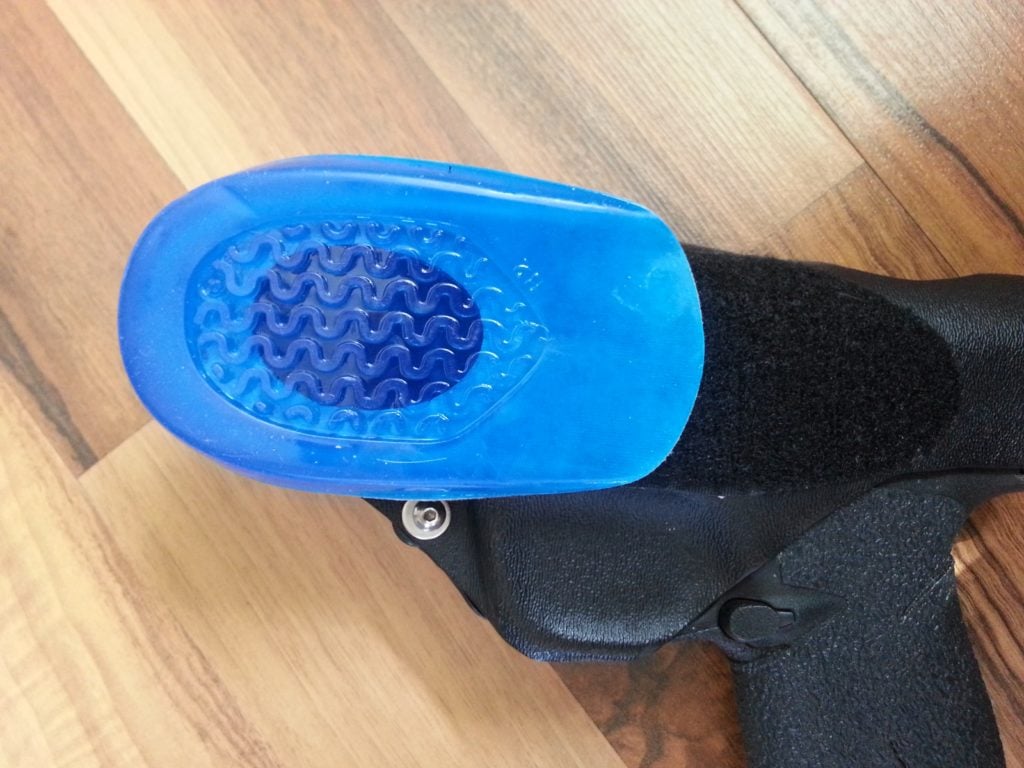
Simply cut the foam or heel insert to fit the holster and attach it to the back of the holster (the part that contacts your body).
Alternatively, a wing or claw attaches to the front of the holster. Some holster makers, like Raven Concealment, offer holsters with an integrated claw.
It is also worth noting that Dark Star Gear makes a sort of universal wing (known as the Dark Wing) that fits a ton of different holsters, giving you that needed rotation.
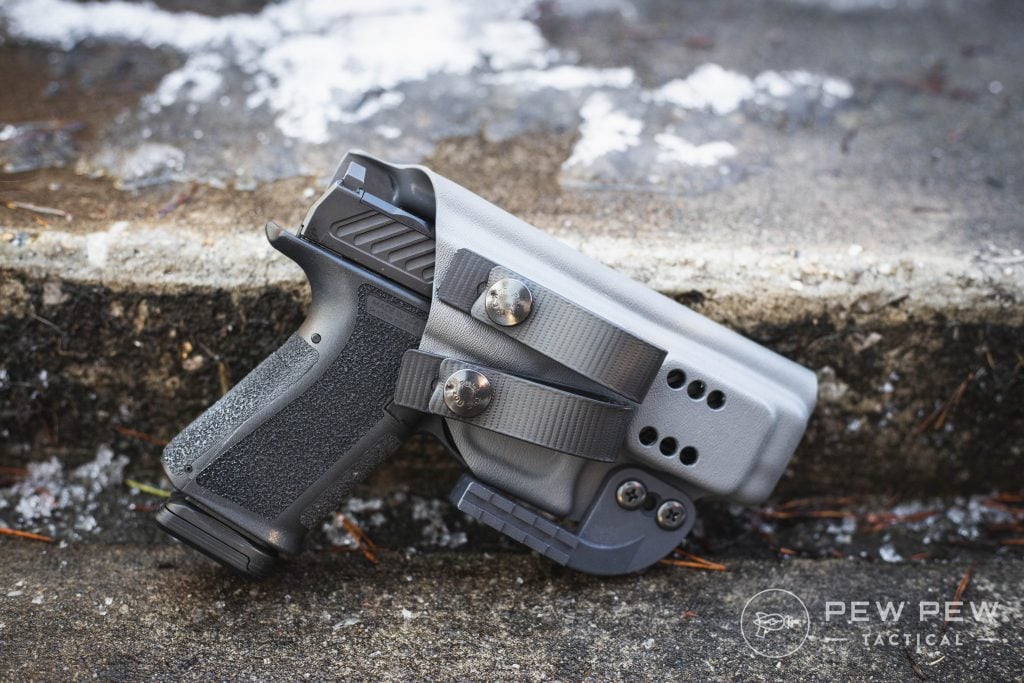
In addition to a good holster, make sure you have a decent gun belt on hand too. A solid gun belt supports the weight of the gun and prevents that saggy feel.
To avoid bulkiness, especially if you’re on the slim side, you can twist your belt a bit so the buckle sits on the side of your body instead the front. This prevents a bulky-looking beltline.
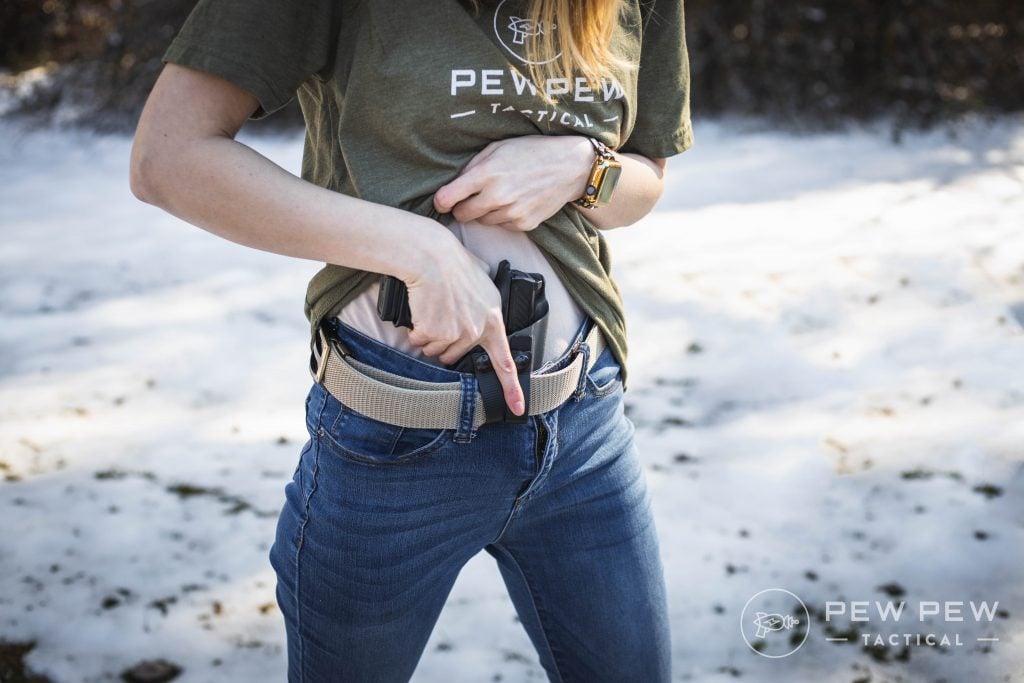
3. How to Reholster
Reholstering in any carry position is often where things can go wrong. So, be intentional when you reholster. Period. Regardless of the holster placement.
What do I mean by intentional reholstering?
Don’t just quickly slap your gun into the holster.
Move slow. Don’t rush it.
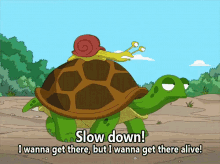
First, pull your cover garment away from the holster with your non-dominant hand. Scoop that fabric up towards your face. You don’t want any lingering shirttails tangled up with your gun as you slip it back into the rig.
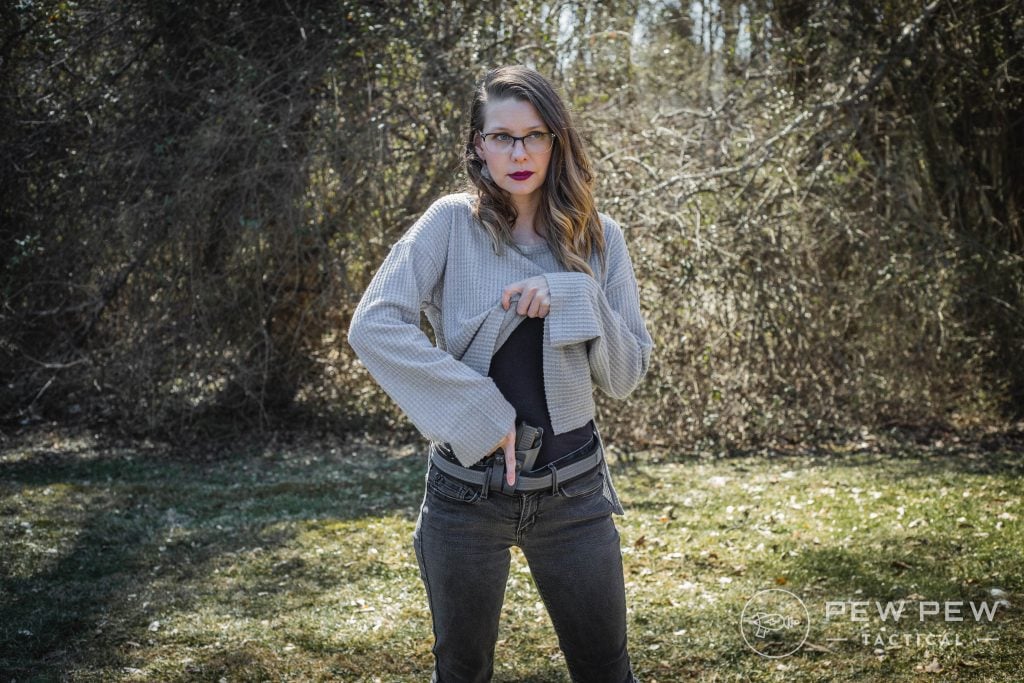
Next, take a small step back with one foot and place your weight slightly behind you.
This slightly rearward lean gives clearance for the gun to easily glide into the holster. It also creates space so, if you should experience an ND, the round does not impact any part of your body.
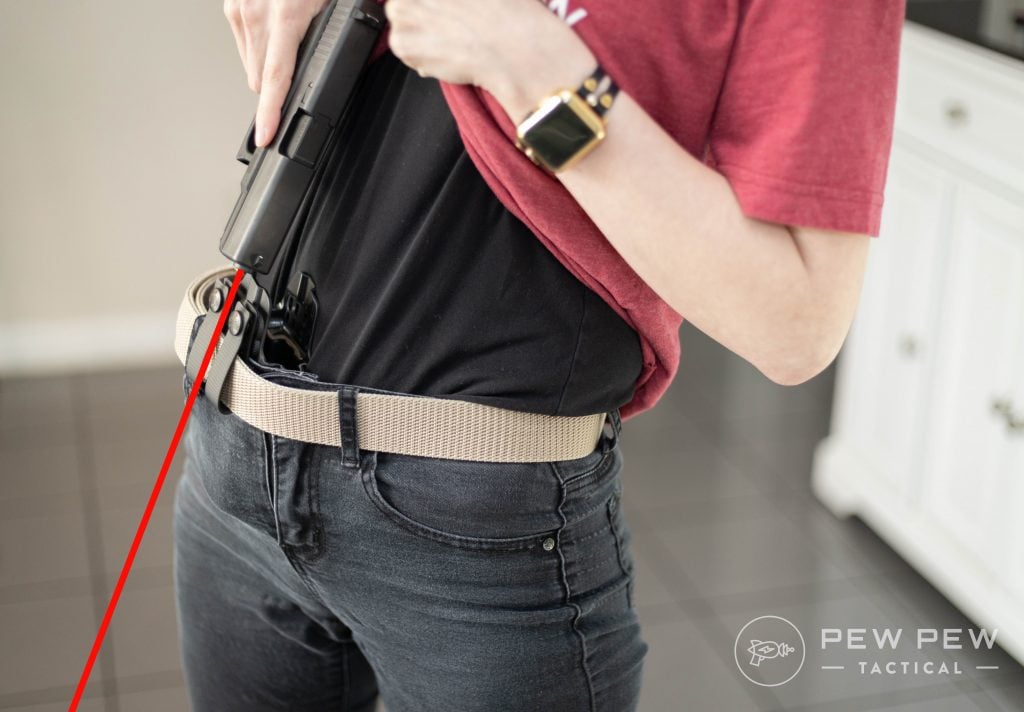
It’s imperative that as you reholster you “look the gun into the holster.” Basically, that’s just a way to say watch the gun go into the holster, making sure there are no obstructions.
And keep your finger off the trigger!
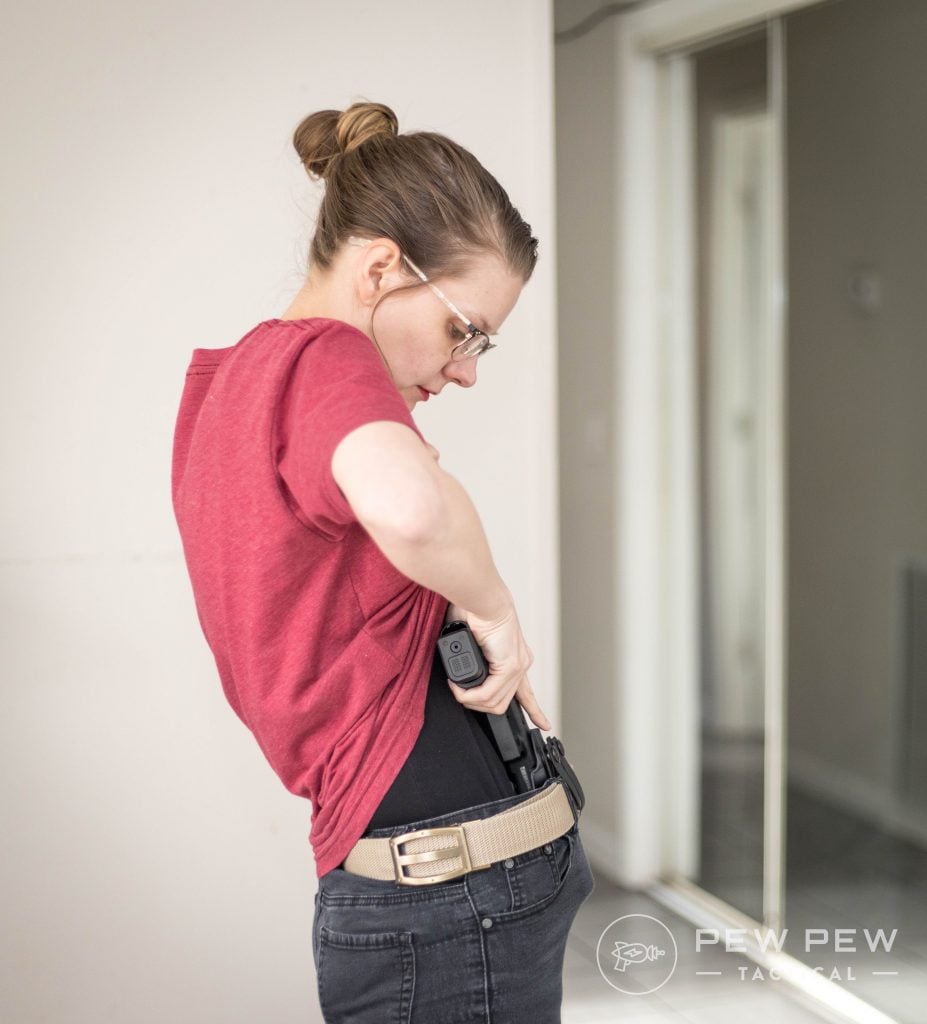
If you have a gun with a safety, engage the safety before reholstering.
Using a DA/SA hammer-style pistol, you can also place your thumb over the hammer to prevent it from lowering.
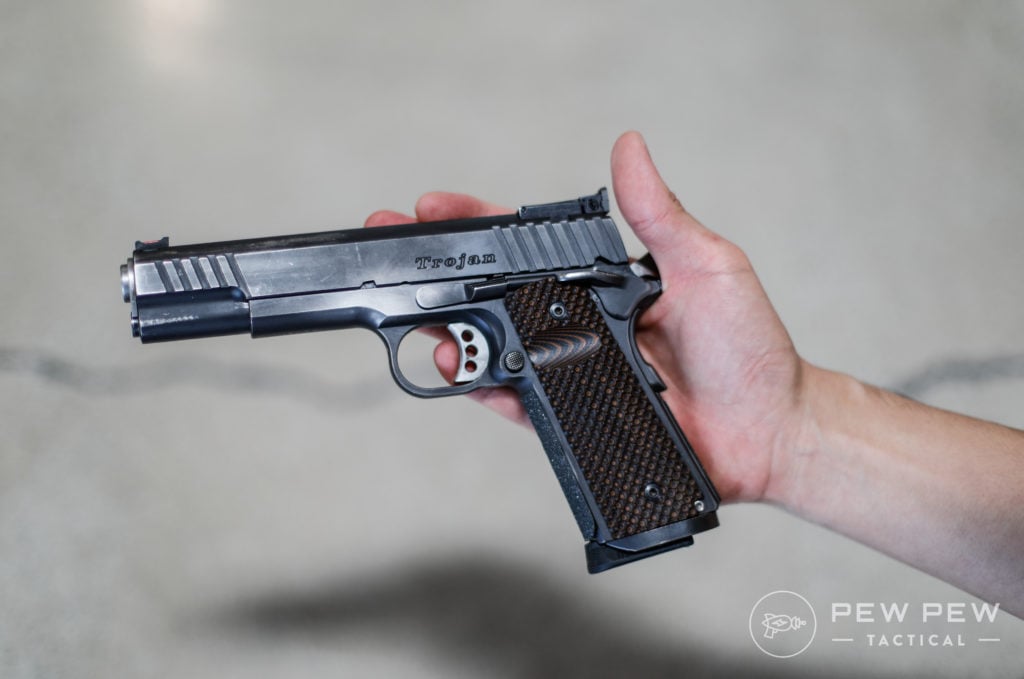
Again, take a look at the video from Brownells for an excellent view on how to reholster safely.
4. Training & Practice
I always end here for a reason. You’re only effective as the training and time you put in.
I get it. Ammo can be tight sometimes, and maybe you’re limited to ranges that don’t allow draw and fire drills.
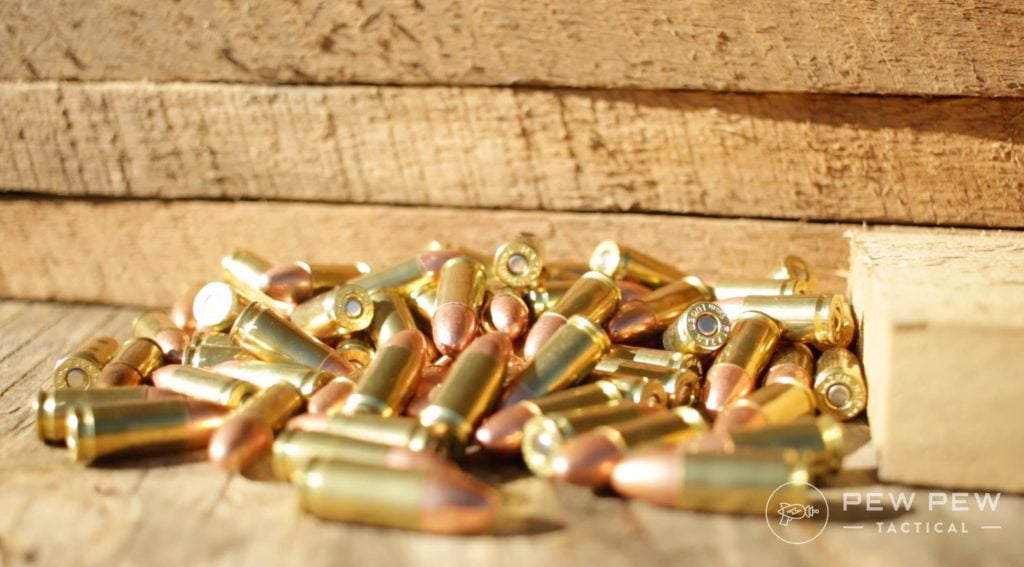
But to the very least, put some dry fire drills into your regular, daily routine at home. It’s inexpensive and, trust me, you’ll see noticeable gains.
Make sure that you work on a clean draw — no finger near the trigger, pressing out smoothly, then reholstering, as I mentioned above.
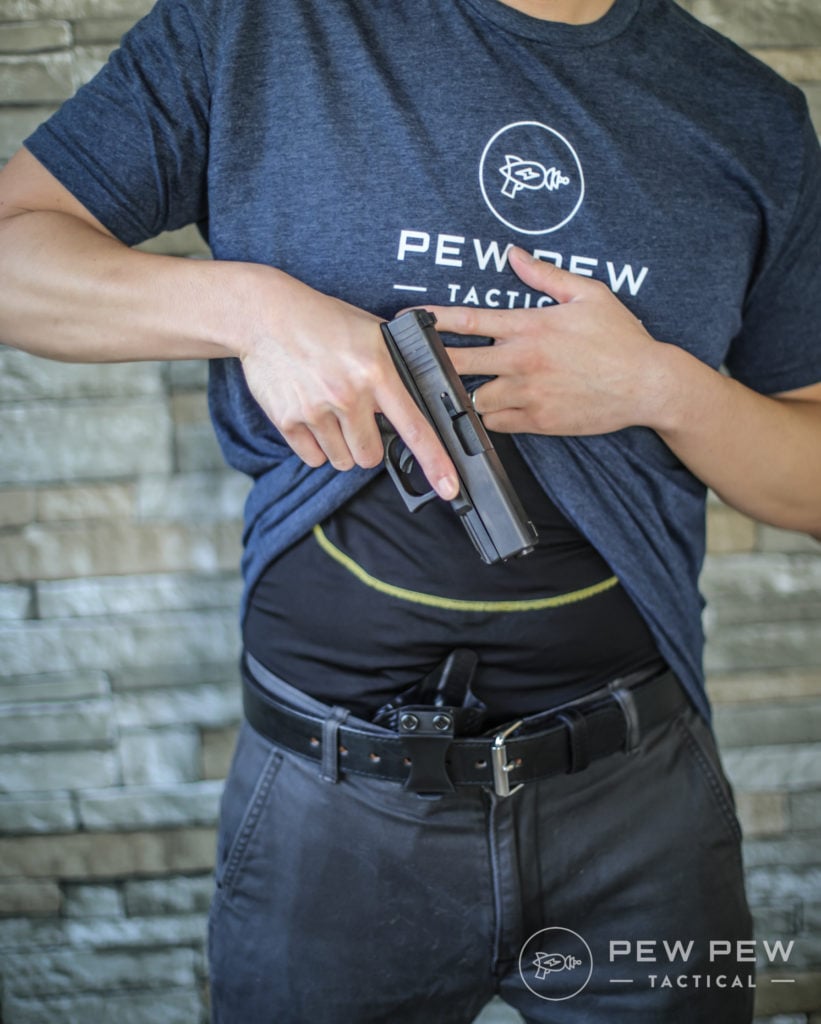
Don’t rush things. Just work on moving with intent at first. Work out those basics. Once your basics are solid, you can work on speeding things up.
If your budget allows, hop into a concealed carry style class or book time with a qualified instructor who teaches AIWB best practices.
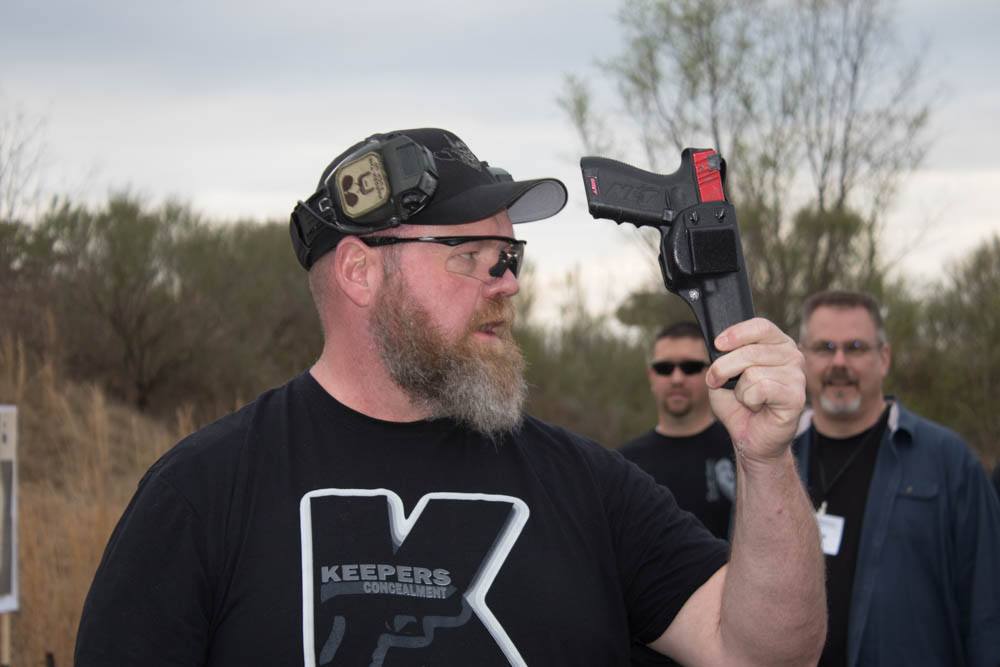
Both are phenomenal resources to help perfect your draw stroke and help you improve in general.
Conclusion
Appendix/AIWB carry is a safe means to concealed carry that places the gun near the abdomen for quicker access. With the right tools — like a good holster, belt, and training — you can successfully AIWB with no issues.
While some gun owners might find this method uncomfortable, others will find it suits their bodies and gives them more options.
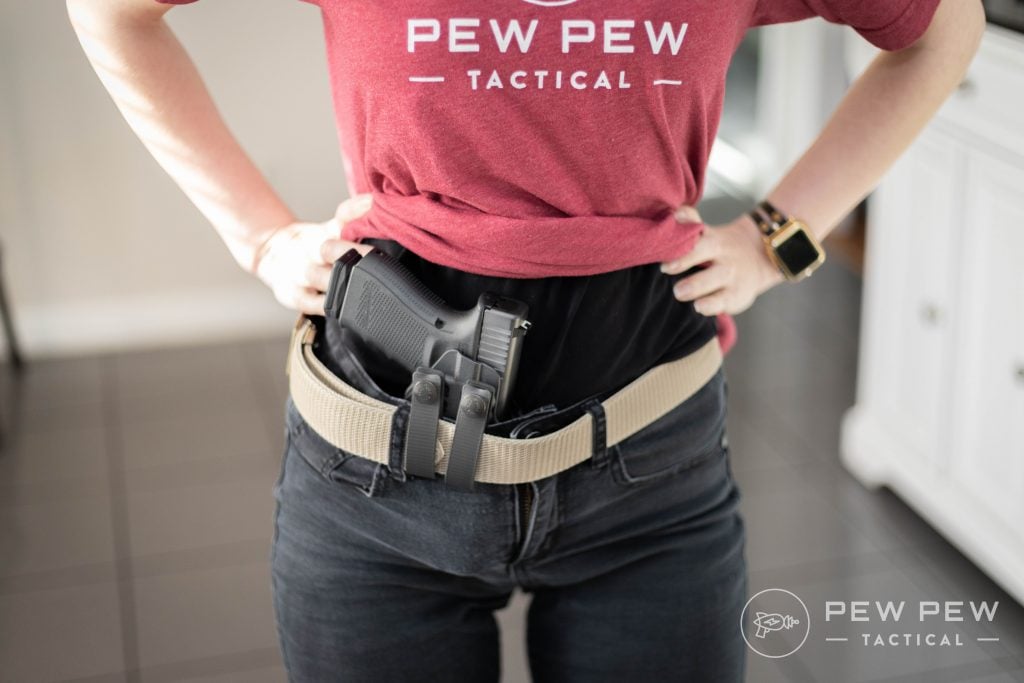
What are your thoughts on AIWB, and what’s your preferred AIWB setup? Let me know in the comments below. Don’t forget to catch up on our Concealed Carry: Benefits of Strong Side Carry and also get some tips on how to Gain Concealed Carry Confidence.

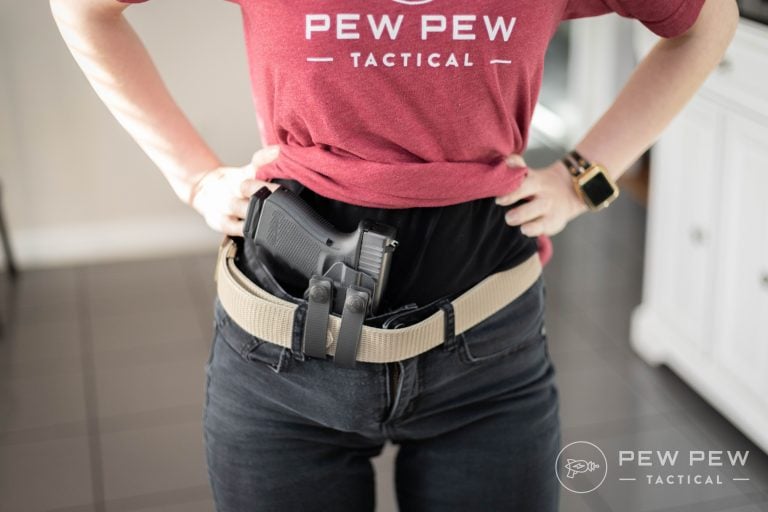







31 Leave a Reply
I don’t like AIWB because it’s uncomfortable sitting. Also it is a dangerous location to that main artery in the leg. I have a gentle lumbar and find carrying in the back very comfortable. I even forget it’s there. I have tried moving it closer to the hip so it’s not near the spine. I have tested my draw and I am definitely faster from the side hip than I am from behind the hip. I’m 5’4” & 135lbs. Fit figure. Carry the Glock 43x.
I don’t like AIWB because it’s uncomfortable sitting. Also it is a dangerous location to that main artery in the leg. I have a gentle lumbar and find carrying in the back very comfortable. I even forget it’s there. I have tried moving it closer to the hip so it’s not near the spine. I have tested my draw and I am definitely faster from the side hip than I am from behind the hip. I’m 5’4” & 135lbs. Fit figure. Carry the Glock 43x.
I don’t like AIWB because it’s uncomfortable sitting. Also it is a dangerous location to that main artery in the leg. I have a gentle lumbar and find carrying in the back very comfortable. I even forget it’s there. I have tried moving it closer to the hip so it’s not near the spine. I have tested my draw and I am definitely faster from the side hip than I am from behind the hip. I’m 5’4” & 135lbs. Fit figure. Carry the Glock 43x.
I don’t like AIWB because it’s uncomfortable sitting. Also it is a dangerous location to that main artery in the leg. I have a gentle lumbar and find carrying in the back very comfortable. I even forget it’s there. I have tried moving it closer to the hip so it’s not near the spine. I have tested my draw and I am definitely faster from the side hip than I am from behind the hip. I’m 5’4” & 135lbs. Fit figure. Carry the Glock 43x.
I've read or seen a few other opinions on appendix carry and when it comes to comfort it's about understanding your body's largest hinge point. Either have the gun high enough that the lowest point is above your hinge and is on your stomach, or have it low enough that it remains parallel with your leg. Your body type and style of dress will be the deciding factor in which position you use, unless you can accomplish moving between both as some do.
Jacki,
In reference to the jeans in the first photo of the article-photo where green finger nail polish on left hand is visible-what jeans are those?
AIWB, probably the most dangerous form of carry anyone ever came up with especially when re-holstering.
yes yes, I've heard all the arguments for appendix carry. I've carried concealed for around 30 years, both for duty and personally. I've been in those situations where you need that firearm right quick and in an eye-blink hurry. I've been through all the training, tactical, combat, you name it. No matter how well you trained, for at least that first time in that right quick and in an eye-blink hurry moment something is more likely to go more wrong than it is right and that something 99% of the time will be the finger going to the trigger before the gun completely clears your body area. The re-holstering, oh man, that first time when that moment is over I can pretty much tell you that at least 90% of you are still going to have your finger on the trigger when you re-holster. I've seen this happen time and time again even to people who were not first timers and were experienced at these types of situations.
With appendix carry, in those situations, if there is a negligent/accidental discharge when you draw or holster when you encounter that moment you are most likely aimed at the genital area or femoral artery and most likely that wound is going to be immediately disabling for you and will have probably lost that battle. In the other carry positions (around your waist mounted holster areas you are aimed at your buttocks or your outer leg, although yes it hurts like hell but its not likely to be immediately disabling for you and you can continue to fight.
Even with the the right tools — like a good holster, belt, and training — at least 90% of you can NOT successfully AIWB with no issues when it comes to that right quick and in an eye-blink hurry moment. The idea is to have your bullets disable the bad guy, not you.
If this were the case then you would see many, many more stories, but you don't. Yes, there are a hand full of AIWB ND's with severe injury or death, but it's very uncommon.
Thanks for the great article! That said, I'm still not gonna do it. Started carrying 10 years ago and I have settled on small of back. I'm not overweight but can't have something pushing on my guts like that. I can do a 40 mile bike ride or any other activity with my Glock 43 and can draw properly with either hand. Cons are some T-shirts want to ride up when bending or squatting and it is difficult to get to when seat belted in. Definitely practice whatever you decide on.
Good read. I carry AIWB. Just like any carry, a proper holster and training will eliminate ND’s. I’m sorry but I have to say you look great doing it. I love girls with guns.
I’m a Urologist, and I have seen 2 who blew parts of their “junk” off. Neither had a proper holster, (or common sense for that matter).
Use a proper holster!!!
I also found that different cuts of jeans are more comfortable.
I used to wear Levi 514s and they were uncomfortable. I switched to 505s that ride higher and it made the difference.
DON'T EVER TELL ME NOT TO CARRY IN A CROP TOP!!!!1!!
(p.s. Good article.)
You're right, you're right. My bad. Haha!
This is also known as the skinny people carry. Any gut size at all and this just doesn't work even with a micro 9.
No joke. It conceals well, and it’s fine when standing, but even my .380 jabs the crap outta me when I sit, and I’m not fat...like at all.
Yeah but immediately after getting a gut the gun will conceal at three o’clock. Those of us that are only 6 inches deep have no other good options.
I easily carry a Glock 19 and a Shield .45 AIWB. My most comfortable holsters by far are by Stealth Gear. The soft backing makes all-day carry not a problem. Another benefit of appendix carry is retention-it’s snatch resistant.
My only problem withe AIWB is the printing issue. I have a fair sized middle (6ft 2ins and 203 pounds), which causes a severe forward cant at the top. Both ends of my GLOCK 30 severely print. Don't have the issue at 4:00 carry. By the way, great article!
Truth, much like Marcus, I have my carry no intention of changing. HOWEVER< thank you, I teach CCW classes. Your pictures and statements may be the answer when female students ask "best way carry" for female shooters. Keep up the good work.
Duly noted in re AIWB. I dispute nothing, nor am I the least bit inclined to try appendix carry. That said, my EDC style from the beginning has been small-of-back (SOB). Specifically, I use a left hand-position IWB holster (NEVER "Mexican-carry"). I am right-handed, so picture for yourselves how that works. Over many years, I have found this carry style both comfortable and secure for any size or type hand gun in either a clipped or static (e.g. Sticky) holster. And yet, my style is typically either ignored in the EDC media or disparaged with specious negatives. All I can say is (like Det. Sgt. Rick Hunter in the old TV show): "Works for me!" Hey PEW PEW: How about an article on SOB carry?
Do you do any sort of empty handed training? The first time someone takes you down hard and gets on top I suspect you're going to discover that SOB has some inherent.... Issues. I prefer AIWB for control and access it gives me, but I think a bunch have you have hit on the most important part.. Whatever you choose.. Train for it. And not just on a range or dry firing. Get hands on with someone competent and trustworthy and see how it goes.
Do you have to get a size larger pants for AIWB?
No different than IWB, IMO.
Plaid & Hawaiian(yuk)aren't the only pattern options for guys. Realtree or Under Armour "Ridge Reaper" tops with jeans work for me. I run a Glock G45 and have had no printing issues.
Great write up! 2 other Pros to AIWB carry is the ability for weak hand draw, if strong hand is compromised, and the other is being able to draw from the sitting position quickly while in a car. But like you mentioned, it takes practice, slow is smooth and smooth is fast.
That's great for a petite person like you, but what about we people with a little weight around the midriff? How about an article for us?
Got you fam, Strong Side Carry.
JX Tactical makes a holster called the Fat Guy Holster. It might be what you are looking for. Going to order one myself.
I’m 6’2”, 200lbs with a 36” waist, so I’m definitely not petite, and to me AIWB is my go-to carry method. For EDC, 75% of the time I carry a Sig P365, and it’ll get lost down there. Then the remaining 25% I’ll carry either a Glock 19 or a Grey Ghost G19, both aren’t huge weapons, but bigger than the Sig. When I want to go larger & AIWB, I can carry my Beretta 96FS or a full-size 1911, no problem. Like the author said though, you also need to dress accordingly, no skinny jeans or body hugging shirts.
Thx for the great article!